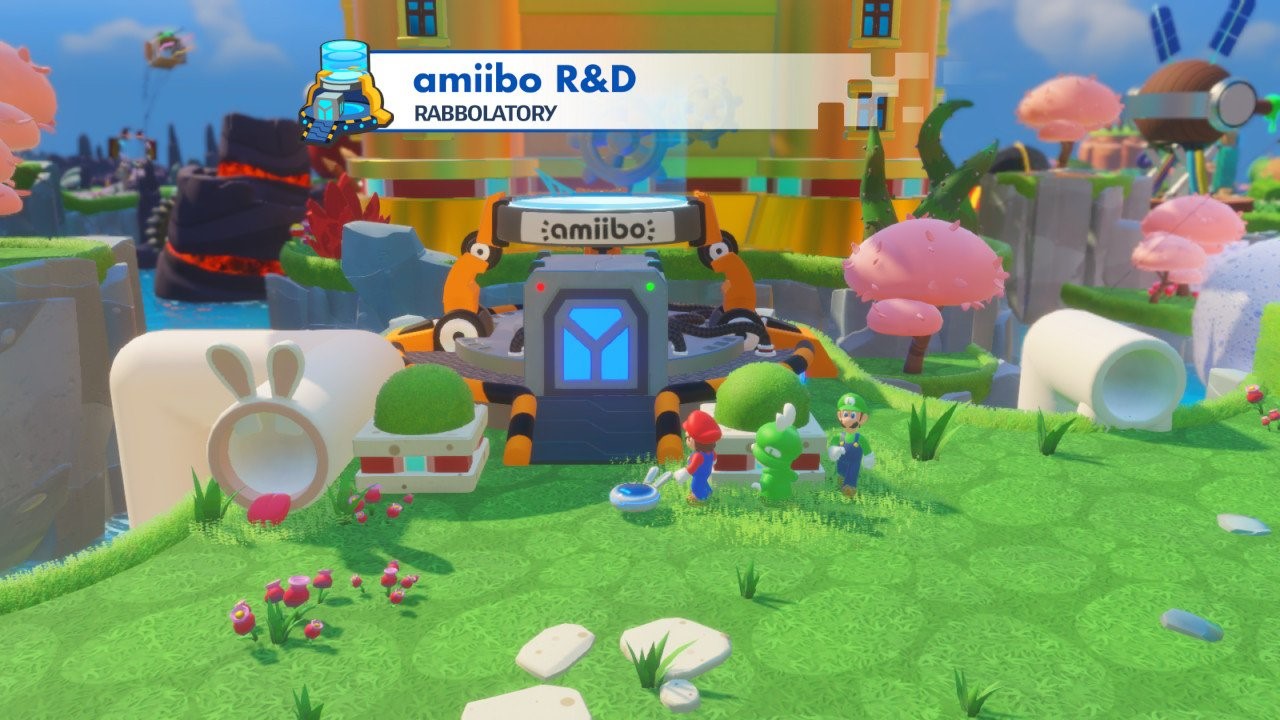Games in Plastic; It’s Fantastic
No matter how I have tried to start this article, there isn’t a single artistic spin that lessens the absurdity of how much I have spent on amiibo. I may not reach the insanity of the collectors who own every single chunk of NFC plastic, but with my array of over 30 different characters, I must recognize I have essentially burned nearly half a grand on glorified toys. As a Magic: the Gathering fan (in which cardboard has more worth than the American dollar), I should be desensitized to the idiocy of wasting disposable income on worthless junk, yet my amiibo budget makes me understand why my father is so disturbed by my lifestyle.
I take solace in knowing that I’m not the only sucker out there. With the Super Mario Odyssey and the Breath of the Wild DLC amiibo just released, Nintendo must have a large enough audience to justify these plastic buggers when all other toy-to-life franchises have since sputtered and died. The amiibo range is almost three years old, and although I was smitten by them when they first came out, my disappointment with them has grown like a slow fungus. My displeasure hasn’t impacted my spending habits, mind you, but I have developed a deeper indignation each time I buy another amiibo. It’s the feeling that counts, right?
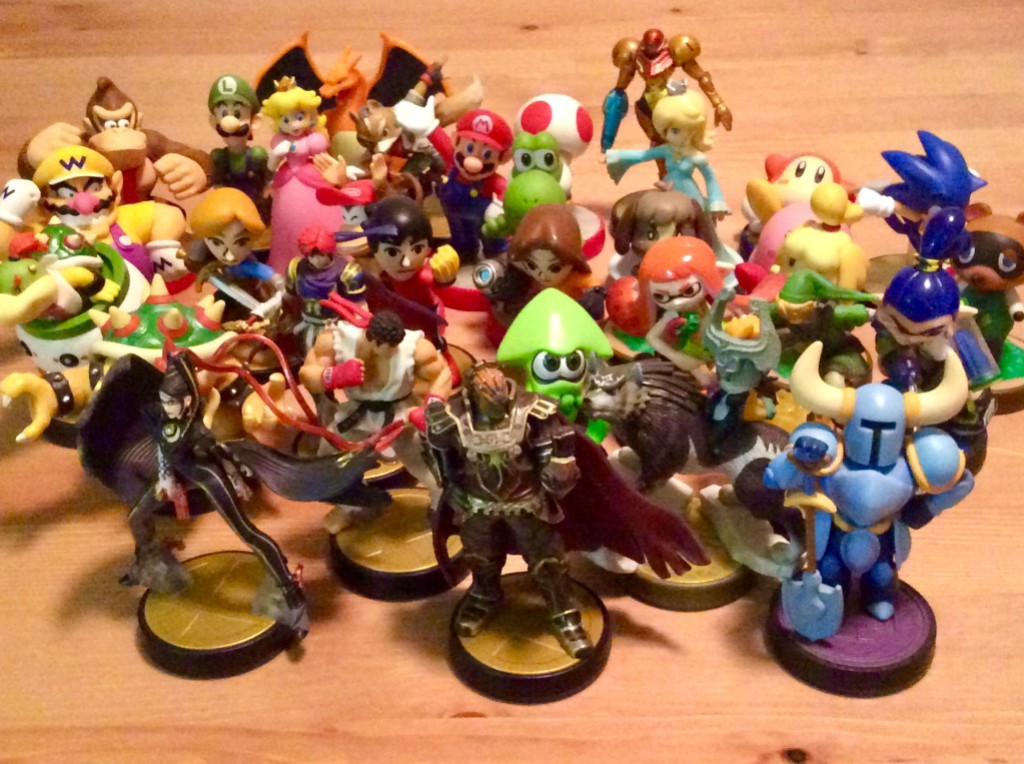
Solomon is neither a photographer nor an owner of a good camera. He will fix neither issue.
If amiibo were only meant to be toys with no game functionality, I would probably not have gripes. Sure, $13-15 a pop is expensive for a little figurine, but when Funko Pop figures run at $10, I question the sanity of the plastic collectible world in general. However, the novelty of amiibo was that they could interact with multiple Nintendo games in different ways (and across platforms!), something that other toy-to-life franchises could not do. Although amiibo have had bright moments, as a brand, they have struggled to develop an enduring identity, and Nintendo doesn’t seem to have a clear plan on how to use them in the future.
It would be foolish of me to believe I have enough insight to advise Nintendo on how to improve their amiibo range. Fortunately, my $500 in plastic paraphernalia is evidence enough that I’m just the right amount of foolish to confront the topic anyway. Nintendo has already demonstrated how amiibo can enhance a game; the conundrum to address here is which implementation best justifies the existence of these figurines.
The Low-Hanging Fruit
Super Mario Odyssey offers two examples of amiibo functionality, neither of which provide a compelling reason to splurge on the hunks of plastic. The first example is the “Scan-to-Win” garbage seen in other games like Hyrule Warriors or Pokkén Tournament. In those games, you can use any amiibo to receive in-game currency and items, which are easily attainable anyway. In Odyssey, you can scan an amiibo with Uncle Amiibo and wait five minutes (because screw you, that’s why) to have the location of a random Power Moon charted on your map. The other example is that certain amiibo can unlock specific costumes for Mario. These costumes can be bought in the game, but amiibo get these costumes to you sooner and for free. Effectively, amiibo are a cool, harmless black market.
Out of all of the amiibo functionalities, these two features are the most innocuous and most widely-implemented. I imagine it takes very little effort to program this reward system, and because the unlocks are so easy to attain without amiibo, no one will feel screwed for not owning a bunch of figurines. It is theoretically nice that almost any amiibo can be used to unlock this content, but again, the unlock is so unremarkable, the effort and time needed to scan often outweighs the actual reward.
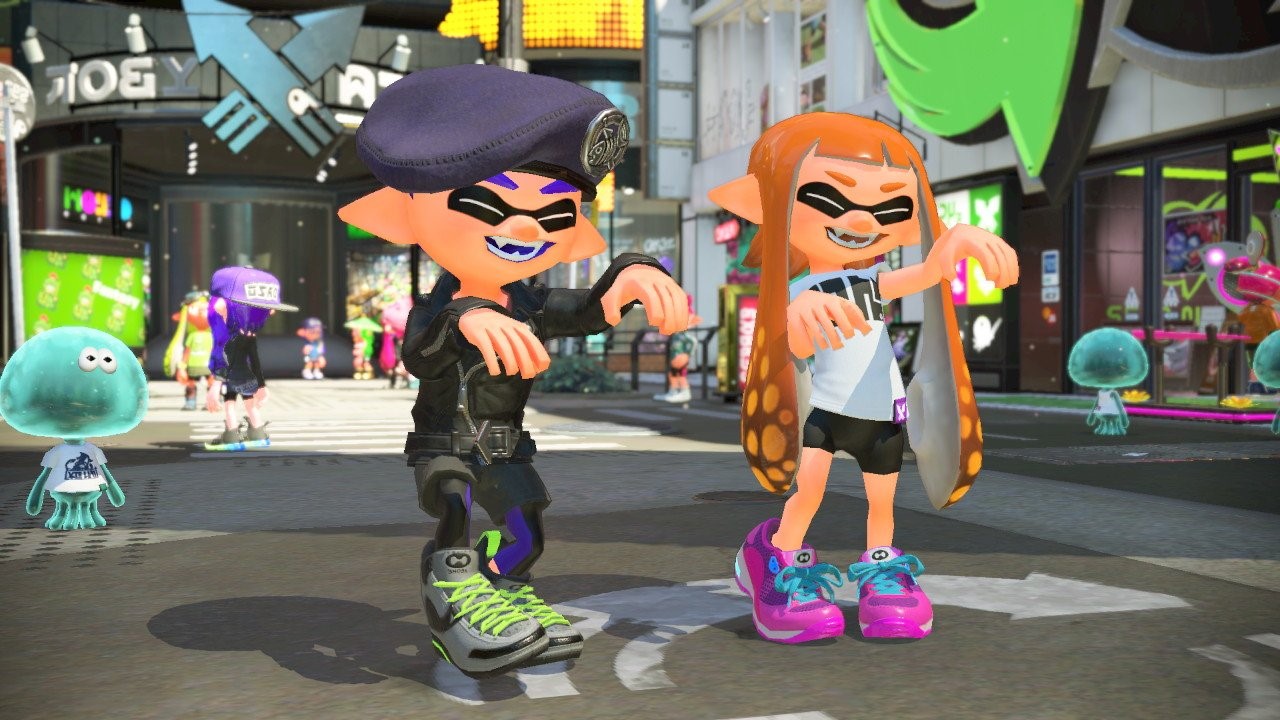
A step above this amiibo functionality is what I call “Skin-Pack Scans.” If Team Fortress 2, PlayerUnknown’s Battlegrounds, and countless other online offerings have shown us anything, it is that people will pay exorbitant prices to accessorize their in-game character. When a skirt or a caribou-shaped hood can go for hundreds or thousands of dollars, wouldn’t it be a steal to spend only $15 to get multiple outfits and a toy figure? This is at least what I think Nintendo’s advertising committee discussed at one point.
In Yoshi’s Wooly World, you can use your amiibo to unlock exclusive Yoshis like Ganondorf Yoshi, Inkling Girl Yoshi, and Black Yoshi (otherwise known as Game-and-Watch Yoshi). For the Legend of Zelda: Breath of the Wild, specific amiibo have a small chance (because again, screw you) to drop retro outfits (including Link’s iconic cap) when scanned. If you like to flaunt your amiibo ownership online, Splatoon 2 offers vintage gear from the first game with Splatoon series amiibo.
Skin-Packs Scans are a little tempting because they give you access to exclusive content. Mind you, this content is purely aesthetic, so you’ll have to live with knowing you are essentially paying extra money to play dress-up with your video game characters. That said, because the content is so superfluous, not many people are going to be upset if they don’t own a particular amiibo. Additionally, if you have a friend with poorer spending habits than you, you can just steal their amiibo, scan them, and ship them back since these are all “read-only” unlocks. Again, the feature is nifty, but if this was all amiibo did, I would hope the quality of the physical product was better to make up for the lack of game functionality.
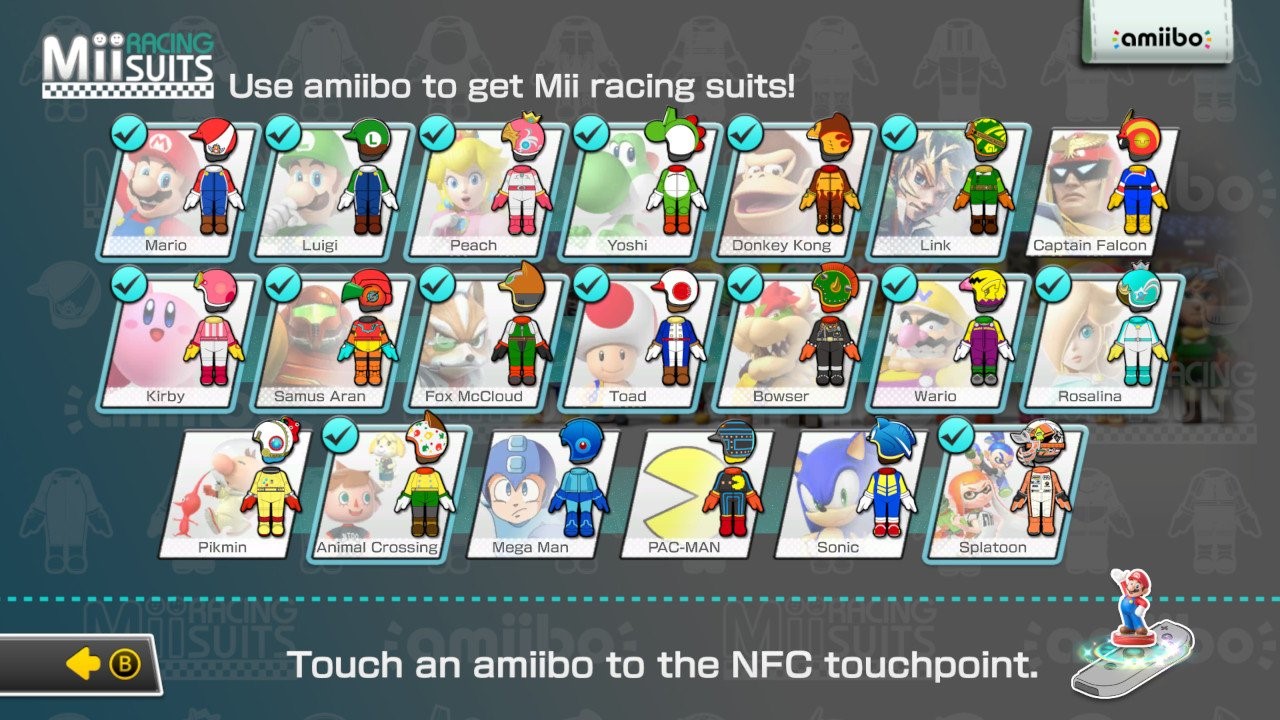
DLC in a Toy
At this point, it’s evident that I expect amiibo to add a little meat to my game to be worthwhile, but this is where we get into sticky territory. Amiibo have widely been criticized as being “physical DLC.” Instead of purchasing a download, you buy a toy which you have to scan every time you want to access said DLC. This is assuming you can find the toy in-stock at your local store. If you can’t, you will have to brave the seedy areas of eBay to acquire your desired amiibo for thrice its MSRP. When the amiibo craze was in its hey-day, many gamers were appropriately frustrated with the thought of having to fight off scalpers and other gamers just to play what was essentially day-one DLC.
The issue is that this physical DLC functionality is what makes amiibo worth their price. My Link amiibo unlocked a unique weapon for Hyrule Warriors. My Toad amiibo offered a thorough (albeit shallow) new mode for Captain Toad: Treasure Tracker. The original three Splatoon amiibo each gave you access to a new way to progress through the single-player campaign, a cool outfit, and a mini-game to help you survive the lobby wait times. Each of these products aren’t worth $15 alone, but when you add the amiibo itself and its functionality with other games, the concept of amiibo finally becomes justified.
How, then, can amiibo deliver this meaningful content without causing people to grumble about needing “Metal Tiara Rosalina” just to play a secret level? Remarkably, Super Smash Bros. 4—the first game to utilize amiibo—showed us how to use amiibo correctly. Although part of the amiibo’s appeal was that you could get your favorite Nintendo character, you could use almost any amiibo for SSB4. Each amiibo creates a fighter of itself which you can then train and customize (and farm items) to become a significantly more difficult opponent than Level 9 computers. The feature seemed simple at first, but now there are whole guides dedicated to training your amiibo and tier lists arguing which amiibo are the strongest.
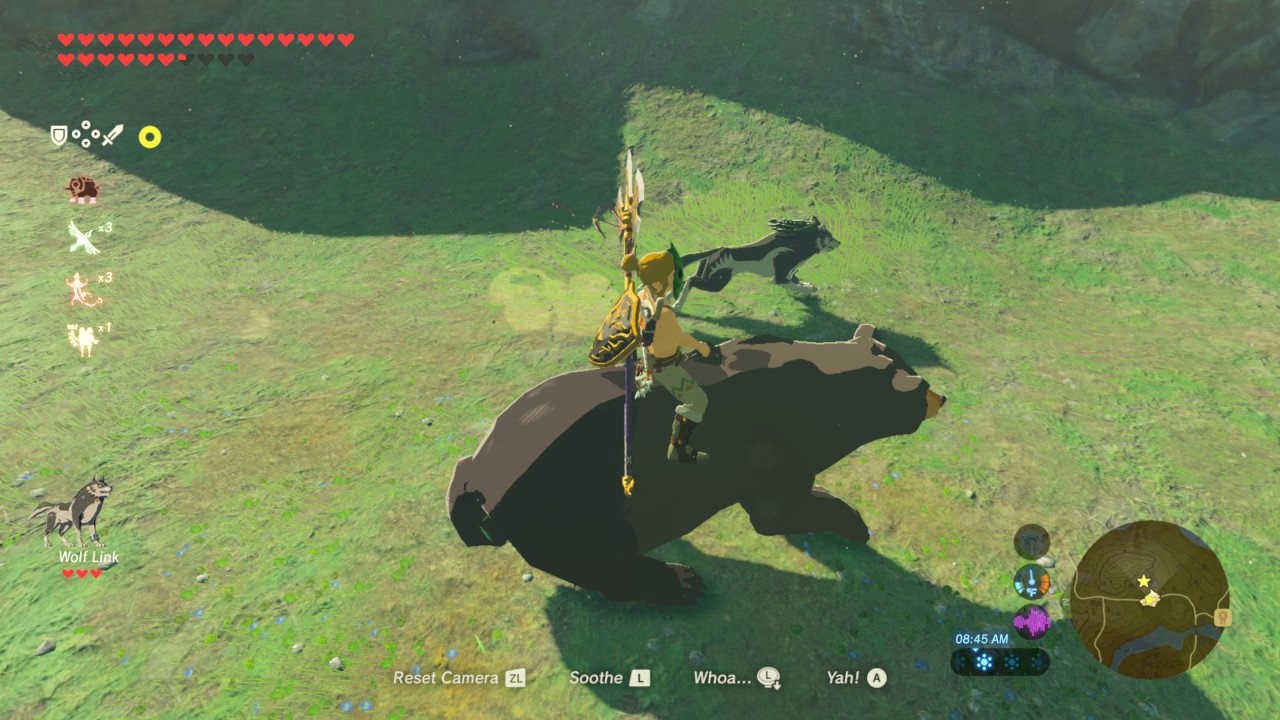
Some people may still gripe about having to buy amiibo to access these unique opponents/teammates, but this is a problem with DLC in general, not amiibo. If you never bought into the amiibo scheme, you weren’t missing out because Smash is arguably about fighting your friends, not computers. However, if you did grab a random character during one of your shopping trips, you had access to a surprisingly deep supplemental feature. Even I still use amiibo to train. And the best part? You don’t need every single amiibo to access the content. Sure, buy a specific amiibo if you want a specific fighter, but if you aren’t picky, you can grab whichever Smash amiibo is cheapest and call it good. If the SSB4 model (amiibo = trainable computers) was applied to all other amiibo games, I might even be satisfied with this.
The amiibo Dream
That said, my pipe dream for amiibo is much more grandiose. Apart from SSB4, my favorite amiibo games (at least in concept) were amiibo Tap: Nintendo’s Greatest Bits and Mini Mario and Friends: amiibo Challenge. Both games were free-to-download and were entirely useless unless you owned amiibo. The more amiibo you owned, the more content you could access. For the most part, amiibo Tap was utter garbage because it offered glorified demos of games most people have already played. Mini Mario and Friends was a solid game, but it’s biggest issue was that you had to pay around $150 in amiibo to access all of the content. When your Diddy Kong amiibo does diddly squat outside of Mini Mario, paying $15 for a handful of levels doesn’t feel dandy.
This brings me to my pipe dream: I want a free-to-download “amiibo Land.” I loved the Wii U’s Nintendo Land to death despite its shallowness and inconsistent game quality, and I want to see a spiritual successor through amiibo. Each amiibo you scan would unlock a random new mini game or mode. You would need to scan your amiibo at the beginning of each play session, but you wouldn’t have to endure the tap-marathons found in games like Mario Party 10 or the atrocious Animal Crossing: amiibo Festival. Maybe you would have to own a whopping 20 different amiibo to access all the content, but who cares? I already own that many, damn it.
You could argue my “amiibo Land” idea is just another Skylanders, Lego Dimensions, or Disney Infinity, and you’d be right. That’s why it is a pipe dream. None of those franchises are alive today, and we could arguably claim the amiibo brand is dying when its sales for 2016/17 financial year were 9.1 million figures, compared to 24.7 million in 2015/16 year. Although 9.1 million sales still seem like a huge amount to me, it may not be to Nintendo, especially not enough to justify a large-scale free-to-download game. Hell, the number may not be big enough for them to consider implementing amiibo functionality on the SSB4 level.
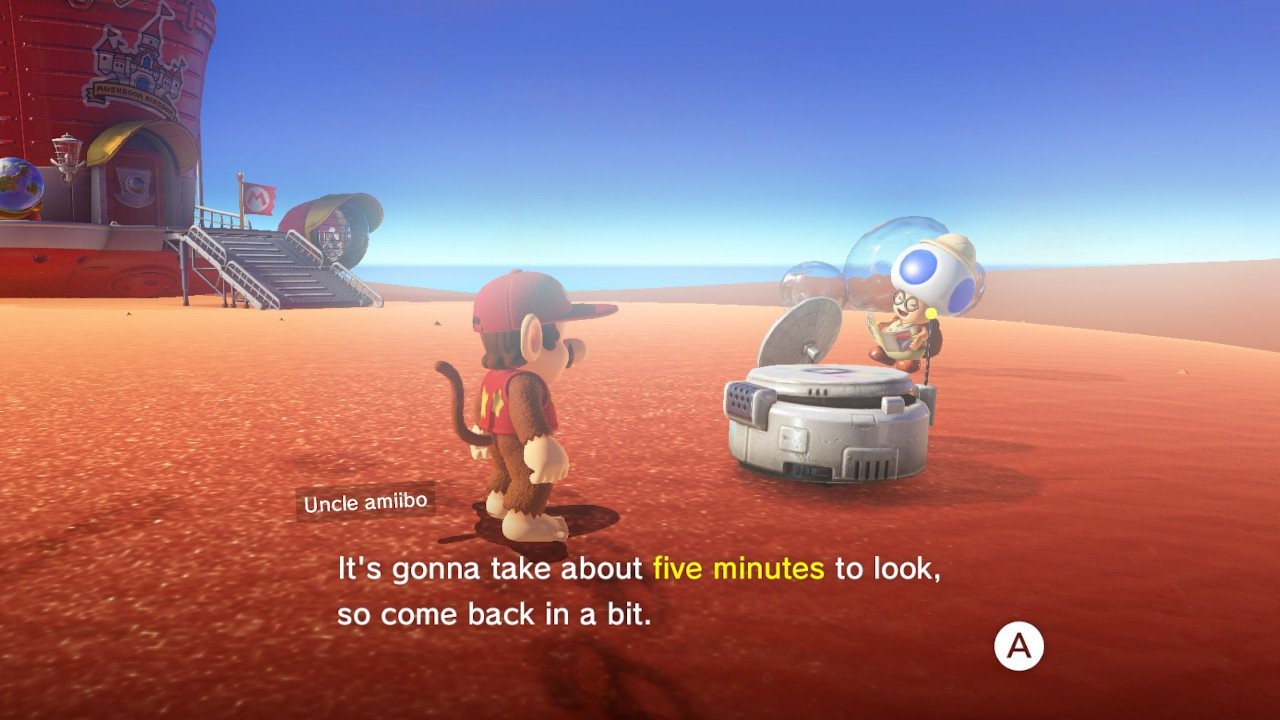
What I do know is Nintendo continues to churn out these figurines, with 34 different characters released in 2017 (the same number released in 2016). With all the other toy-to-life series dead, Nintendo theoretically has the market to themselves, so there has to be money in amiibo. Even after hundreds of dollars and few compatible games, amiibo still maintains some appeal for me. They look cool; I’m an avid Nintendo fan. Put those two together, and I bleed money. That said, I don’t have to be happy about my hemophilia.
Let’s Wrap This Up
Ultimately, we can look at amiibo as their own little gaming system. A gaming system can be as eye-catching and as trendy as it wants to be, but its success is dependent on its quality games. Right now, amiibo has had only one “AAA title,” that being SSB4. There are “A/B” level games as well, but for every Captain Toad: Treasure Tracker or Mini Mario and Friends, there are the “shovelware” implementations which offer skin packs or farm resources. Like its debut system, the Wii U, amiibo have great potential to create something novel, but currently, we have a system fumbling around in a wasteland of bad decisions and minimal payoff.
_________
Do you agree with me? Are you personally offended by my beliefs? Do you just hate my guts? Leave a comment to express your innermost desires, and I’ll selectively choose the ones which stroke my ego.

